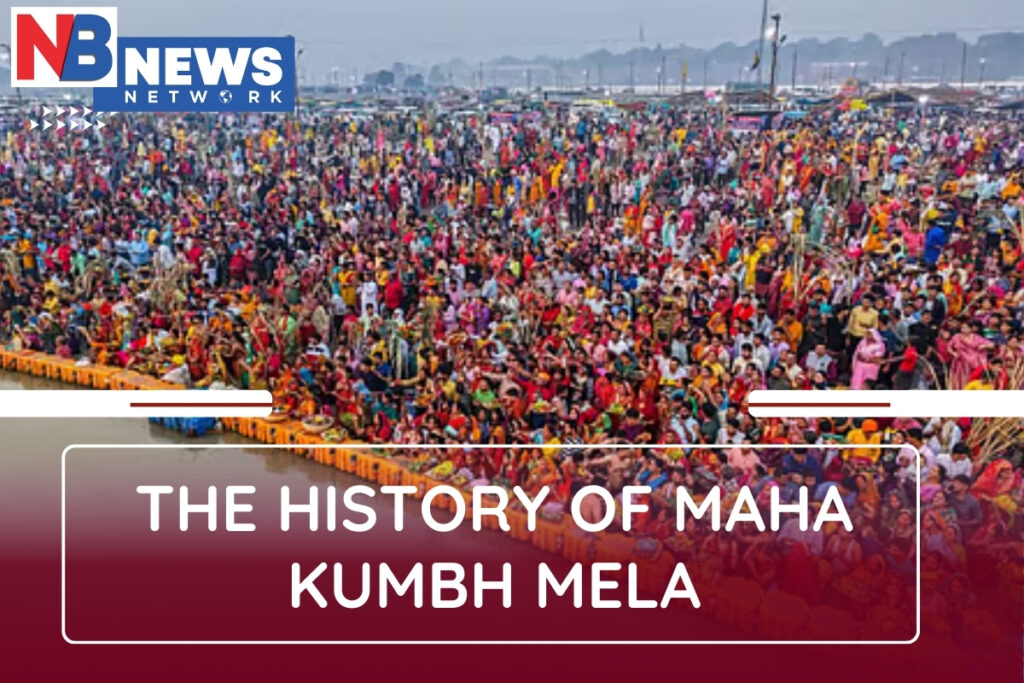The Maha Kumbh Mela, grand Hindu festival, one of the biggest gatherings on Earth, has a story that stretches back thousands of years. Rooted in ancient myths and shaped by history, the Maha Kumbh Mela location changes with time. It brings millions together for a sacred dip in holy rivers. Let’s explore the rich past of this incredible event and see what makes it so special.
Ancient Roots of Maha Kumbh Mela
The story of the Maha Kumbh Mela begins with a tale from Hindu mythology called the Samudra Manthan, or the churning of the ocean. Long ago, gods and demons teamed up to churn the milky ocean to find amrita, the nectar of immortality. When the pot of nectar appeared, a fight broke out. To keep it safe, Lord Vishnu, disguised as Mohini, grabbed the pot and ran. As he did, drops of amrita fell at four places: Prayagraj, Haridwar, Ujjain, and Nashik. These spots became sacred, and the Maha Kumbh Mela location rotates among them.
- Mythical Beginnings: The idea of bathing in these rivers to wash away sins started with this story, believed to bring spiritual cleansing.
- Old Texts: Ancient books like the Puranas and Mahabharata mention pilgrimages to river confluences, hinting at early versions of the festival.
- Early Records: A Chinese traveler named Xuanzang wrote about a big gathering at Prayagraj in the 7th century, showing it was already a big deal back then.
While the exact start of the Maha Kumbh Mela is fuzzy, these tales suggest it’s been part of Hindu life for over two millennia. The focus on bathing and seeking purity has stayed strong through the ages.
Also Check:- Discover Hidden Places in India: Offbeat Gems Worth Exploring
How Maha Kumbh Mela Location Was Chosen
The Maha Kumbh Mela location isn’t random—it’s tied to the stars and planets. The festival follows a 12-year cycle based on Jupiter’s movement, with a special Maha Kumbh Mela happening every 144 years in Prayagraj. Each site has its own river and astrological timing:
- Prayagraj: Where the Ganga, Yamuna, and mythical Saraswati meet, it hosts the Maha Kumbh Mela when Jupiter is in Taurus and other planets align.
- Haridwar: Along the Ganga, it’s time when Jupiter is in Aquarius, drawing millions for a holy dip.
- Ujjain: On the Shipra River, it shines when Jupiter is in Leo and the Sun and Moon are in Aries.
- Nashik: By the Godavari, it comes alive when Jupiter is in Leo and other stars line up.
This mix of astronomy and faith makes the Maha Kumbh Mela location a moving celebration, shifting every few years. The rare 144-year event in Prayagraj is seen as the holiest, pulling in the biggest crowds.
Evolution Through History
The Maha Kumbh Mela grew over time, shaped by rulers and changing times. Early on, it was a simple gathering for bathing and prayers. By the medieval period, texts like the Ramcharitmanas and Mughal records praised its scale. But it was under British rule that things really took shape. In 1870, the British organized the first official Maha Kumbh Mela at Prayagraj, using trains to bring more people. This marked a shift from a local event to a global spectacle.
- Colonial Impact: The British set rules and infrastructure, making it easier for millions to attend.
- Modern Growth: Today, governments add roads, tents, and even health checks to manage the huge crowds.
- Cultural Mix: Sadhus, pilgrims, and visitors from all walks of life now join, blending spirituality with community spirit.
Some say the British added the “Kumbh Mela” name to control the event, while others credit Adi Shankaracharya in the 8th century for organizing it. The truth might lie somewhere in between, with the festival evolving naturally over centuries.
The Spirit of Maha Kumbh Mela
The Maha Kumbh Mela is more than a bath—it’s a celebration of faith, unity, and culture. People believe dipping in the rivers during this time cleanses their souls and brings blessings. The 2013 event in Prayagraj saw 120 million visitors, with 30 million on one day alone. The upcoming 2025 Maha Kumbh Mela in Prayagraj, from January 13 to February 26, is expected to draw even more, thanks to its 144-year rarity.
- Sacred Baths: The Shahi Snan, led by Naga Sadhus, kicks off the festival with a royal dip.
- Community Joy: Fairs, talks by saints, and shared meals bring people together.
- Global Recognition: UNESCO lists it as an intangible cultural heritage, celebrating its unique spirit.
The Maha Kumbh Mela location changes, but its heart stays the same—drawing millions to seek peace and connection.
Looking Ahead
The Maha Kumbh Mela continues to grow, blending old traditions with new challenges. The 2025 event in Prayagraj will test modern planning with its massive crowds, but it also shows the festival’s lasting pull. Some wonder if the focus on tourism might overshadow its spiritual roots, yet the faith of the pilgrims keeps it alive.
The history of Maha Kumbh Mela is a journey from myth to mass gathering, with Maha Kumbh Mela location guiding its path. It’s a reminder of how beliefs can bring people together across time, rivers, and stars. Whether you’re a believer or just curious, this festival’s story is one worth watching unfold.



1 Comment
Pingback: Maldives vs Lakshadweep: Which Island Should You Pick for Your Honeymoon? - NB News Network